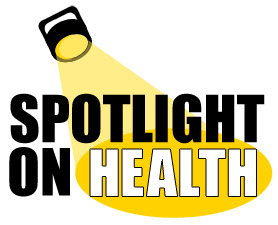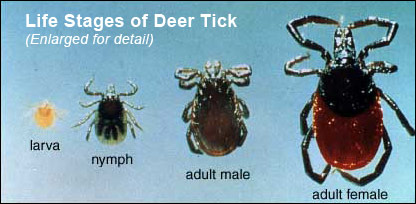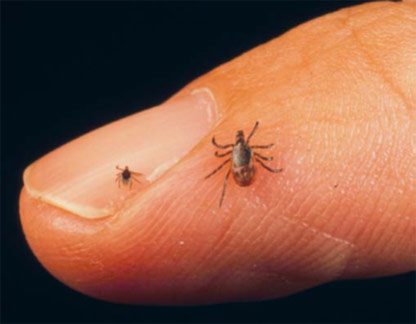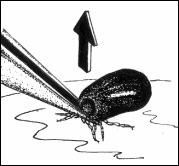- LLBO Home
- Administration
Administration
Child Support Enf.DMVDuluth OfficeEconomic DevelopmentEnrollmentFinancial ServicesFleet ManagementLegal DepartmentMIS
Opioid TreatmentPurchasingSecurityT.E.R.O.TransitTribal DevelopmentTwin Cities OfficeUtilities Commission
Tribal Court
Court HomeCourt FormsCourt FinesCourt Codes
Attorney ProceduresBaMeNim AnishinaabegDiversionTribal Court Awards
Tribal Police
LLTPD HomeAnimal ControlDomestic ViolenceMeth Coordinator Prescription Drug
- Education
- Health Division
Health Programs
AmbulanceBehavioral HealthCar Seat ProgramD. Fitness CenterENPEmergency Prep.Environmental HealthFamily Spirit
Food DistributionHome Health CHRMed TransportationNutrition ServicesOccupational HealthPatient BenefitsS.H.I.P.
Elder & Disability Services
Nursing programs
Child & Teen ClinicLL Diabetes ClinicTransform Rez
Health Reports
- Human Services
Addictions & Dependecies Program
A & D ProgramAdolescent OutpatientAhnjiBeMahDis HouseAssessment UnitFamily Violence Prevent
Outpatient TreatmentRecovery MaintenanceRelapse PreventionWomen's Halfway HouseWomen's Services
Child Welfare
Adoption ServicesChild Abuse PreventionChild ProtectionFamily Preservation
Foster CareParent Support ServicesTruancy PreventionYouth Living Skills
Other Human Serviecs Programs
- Res. Services
Reservation Services
EngineeringFacilities ManagementHeavy EquipmentRoads & SurveySanitation
Small Vehicle GarageSolid WasteWell & SepticWell Drilling
Community Services
- Resource Mgmt.
- Tribal Assistance
Tribal Assistance Programs
Contact Us
(218)-335-4500 Phone
1-800-282-3389 T-free
Mailing Address
115 Sixth Street NW
Cass Lake, MN 56633
Health Division 1
120 Second Street NW
Cass Lake, MN 56633

Health Division 2
312 1st Street NW
Cass Lake, MN 56633

Office Hours
Monday - Friday
8:00 a.m. - 4:30 p.m.
Programs may be open at different times. Please see individual programs for specific hours.
Newsletter Archive
Spotlight Archive
Health Division

Tick Disease Prevention
Its not just about Lyme Disease anymore!
| Lyme Disease | Babesiosis & Anaplasmosis | Ehrlichiosis(HME) |
Lyme disease is a multisystem disorder with diverse cutaneous, arthritic, neurologic, cardiac, and occasional ocular manifestations. Symptoms that occur within days or weeks following the tick bite reflect localized or early-disseminated infection. Late manifestations become apparent months or years after infection. The major signs and symptoms provided below do not cover all those associated with infection. Mild nonspecific systemic symptoms may be associated with or without a rash and include fatigue, muscle and joint pain, headache, fever, chills, and stiff neck. These flu-like symptoms may occasionally occur in the absence of an identified rash and be identified as ‘summer flu.’ Respiratory or gastrointestinal complaints may occur, but are infrequent. |
Babesiosis can range from mild flu-like illness to a severe life-threatening disease. Infection often is accompanied by no symptoms or only mild flu-like symptoms in healthy children and younger adults. The disease can be severe or fatal in the elderly, the immune suppressed (HIV infection or use of immunosuppressive drugs), and people without spleens. The greatest incidence of severe disease occurs in those older than 40 years of age. Symptoms of babesiosis include fever, fatigue, chills, sweats, headache, and muscle pain beginning 1-6 weeks after the tick bite. Nausea, vomiting, diarrhea, abdominal pain, cough, shortness of breath, weight loss, dark urine, and enlarged spleen also may occur. Complications such as acute respiratory failure, heart failure, and kidney failure have been associated with severe anemia and high levels of infection. Illness may last weeks to months and recovery can take many months. Co-infection with other tick diseases can result in overlapping symptoms, a more severe illness, and a longer recovery than either disease alone. |
Symptoms for both types of ehrlichiosis are non-specific and include fever, headache, muscle pain, nausea, vomiting, and malaise. Initial symptoms appear 5-10 days after the tick bite. Illness may be mild, moderate or severe. Some cases require hospitalization and there have been deaths. A rash is uncommon in adults, but a rash has been observed in many HME cases in children. Most patients show a decrease in their white blood cell and blood platelet counts and an increase in liver enzymes. The number of clinical cases increases with age. The highest rates have been observed for patients 50 years of age or older. Severe cases and fatalities have been reported across all age groups. HME has been confused with Rocky Mountain spotted fever.. A diagnosis of ehrlichiosis should be considered for patients with a flu-like febrile illness and possible exposure to I. scapularis. Co-infections by the agents of HGE and Lyme disease have been reported and may result in more severe disease. |
There is more than one type of tick.
The Deer Tick


Deer ticks search for a host at ground level. Ticks acquire the disease agents from the white-footed mouse and other small mammals.
The images shown below represent the approximate sizes during different stages of a tick’s life.
Larvae - A deer tick starts as a 6-legged larva, which does not transmit disease.
Nymph - Most cases of tick-borne disease are caused by the nymph, which looks like a freckle or speck of dirt. The nymph feeds from May through July.
Adult - The larger adult ticks feed in fall and early spring, and are easier to see and remove. After feeding on deer, the female lays her eggs, which hatch into larvae in May and June.
Only the nymphs and adult female can transmit disease. The adult female has a reddish-orange back. Engorged adult female deer tick
Wood ticks (also called dog ticks) - Larger than deer ticks, wood ticks have white markings on their back and do not transmit Lyme disease, human anaplasmosis, or babesiosis.
Tick Behavior
- Most Lyme disease cases are associated with the bite of the nymphal stage of the blacklegged tick
- Nymphal blacklegged ticks are very small (about the size of a pinhead), difficult to spot, and are active during the late spring and summer months when human outdoor activity is greatest. The majority (about 75%) of Lyme disease cases are associated with activities (play, yard or garden work) around the home.
- Adult blacklegged ticks are active in the fall, warmer days in the winter, and in the spring when outdoor activity and exposure is more limited. They are larger, easier to spot, and therefore associated with fewer cases of Lyme disease (even though infection rates are higher).
- Ticks do not jump, fly or drop from trees, but grasp passing hosts from the leaf litter, tips of grass, in the shrub layer several feet above the ground. Most ticks are probably picked up on the lower legs and then crawl up the body seeking a place to feed.
- Children 5-13 years of age are particularly at risk for tick bites and Lyme disease as playing outdoors has been identified as a high-risk activity. Take notice of the proximity of woods or grassy and brushy areas and playing fields. While ticks are unlikely to be encountered in open fields, children chasing balls off the field or cutting through woods to school may be entering a high-risk tick area.
- Pets can bring ticks into the home, resulting in a tick bite without the person being outdoors. A veterinarian can suggest methods to protect your pets. Engorged blacklegged ticks dropping off a pet will not survive or lay eggs in the house, as the air is generally too dry.
Diagnosis & Treatment
If you think you have been exposed to a tick, see your doctor and explain how you think you may have been exposed. Describe to your doctor all of your symptoms, even if you dont think they are related.
Prevention
- Wear light-colored clothing with long pants tucked into socks to make ticks easier to detect and keep them on the outside of the clothes. Larval and nymphal ticks may penetrate a coarse weave sock. Do not wear open-toed shoes or sandals.
- Use a DEET or permethrin-based mosquito and tick repellent, which can substantially increase the level of protection.
- When hiking, keep to the center of trails to minimize contact with adjacent vegetation.
- Unattached ticks brought in on clothing can potentially result in a later tick bite. Blacklegged ticks can survive for many days in the home depending upon the humidity. On returning home, remove, wash and dry the clothing. Many blacklegged ticks and lone star ticks can survive a warm or hot water wash, but they cannot withstand one hour in a hot dryer.
- Carefully inspect the entire body and remove any attached ticks .Ticks may feed anywhere on the body. Tick bites are usually painless and, consequently, most people will be unaware that they have an attached tick without a careful check. Also, carefully inspect children and pets. A hypersensitivity reaction to tick bite may aid detection in a few individuals, but most people will be unaware a tick is attached and feeding.
 Tick Removal
Tick Removal
- Use tweezers to grasp the tick close to its mouth.
- Gently and S-L-O-W-L-Y pull the tick outward.
- Apply an antiseptic to the bite.
- Do not burn it off or use petroleum jelly.
Not all people bitten by a deer tick will get a disease. Not all deer ticks carry diseases. If a deer tick is infected, it must be attached for at least 24 hours before it can transmit Lyme disease.
Prompt removal of attached ticks prevents disease!
More Information
For more information, contact:
The Health Division or your local clinic.
The Minnesota Department of Health at: 651-201-5414 or 1-877-676-5414


